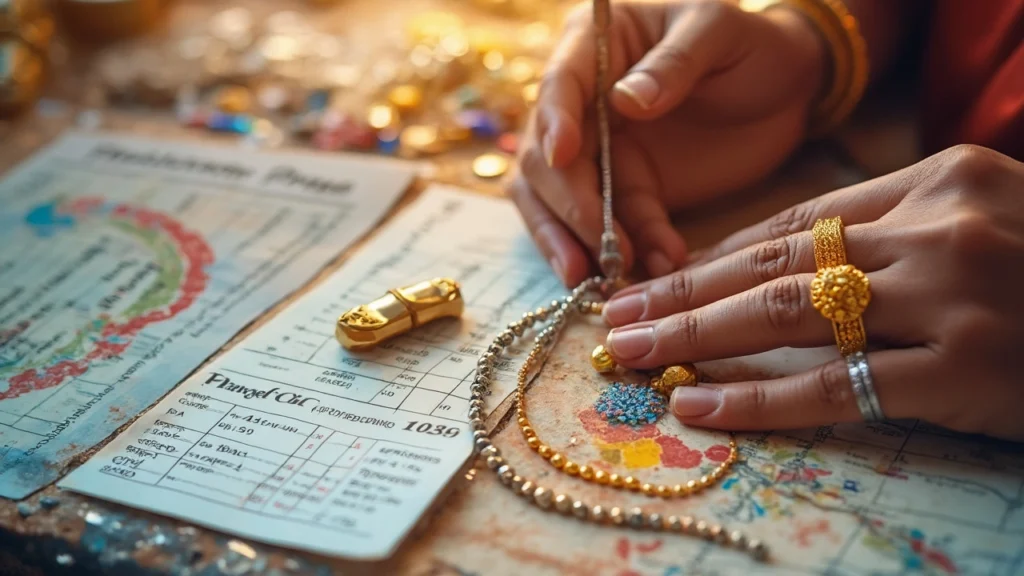The jewelry industry works with different pricing principles, which vary from market to market, and markups from wholesale to retail play a crucial role in profitability.
As a retailer, it is important to understand these markups to set the right pricing that attracts customers while maintaining profitability.
Whether you deal with Sterling Silver or fine jewelry, understanding the role of factors like regional pricing and customer setting prices is necessary to navigate the jewelry industry.
Typical Jewelry Markup Ranges
Fashion Jewelry
Pricing for fashion jewelry often follows a 4-6x pattern. Since production costs are low and buyers are after products that suit their style instead of value, it is easy for retailers to inflate prices up to 600% without scaring customers away.
Sterling Silver Jewelry (925)
Consumers of Sterling Silver Jewelry look for a blend of quality and affordability. Hence, retailers must set prices strategically. Pricing strategies include keystone pricing, which puts prices at 200% of the wholesale costs.
Gold-Plated or Vermeil Jewelry
Gold-plated jewelry pieces are priced at 2-3 times production costs. With this, customers can get premium looks at an affordable price, while retailers also make reasonable profits.
Fine Jewelry (Gold, Diamonds, and Gemstones)
Fine jewelry has the lowest markups in the jewelry market. Since raw materials are expensive, a low markup of 1.5-2x is justifiable.
Generally, markups across the industry range from 50-300%, depending on material and brand.
Pricing Strategies & Psychology
Keystone Pricing
This price strategy is applied by doubling the wholesale cost. It is an effective pricing method for many retailers, especially those operating in the silver sector.
Charm Pricing
This pricing gives buyers the illusion of lower prices. For example, when a product costs $200, attaching a price tag of $199 gives a false perception of the price without manipulating customers.
Price Anchoring
Retailers give buyers the impression of buying at a lower price by comparing prices to higher prices. For example, a product priced at $200 can carry a “$200 instead of $350” tag.
Bundling Sets
This pricing psychology involves offering discounts on combined products. An example is “earrings + necklace at a discount”. This helps drive sales while maintaining margin.
Decoy Pricing
With this, the seller offers high-priced products so the buyer can ask for a low-priced option, which is the targeted product for sale. This method works effectively when attending to customers on a low budget.
Regional Differences in Markups
United States
Keystone pricing (2×) is a common pricing method in the United States. However, retail markups trail wholesale changes.
Canada
Due to higher taxes and import duties, importers pay more to import jewelry into Canada. This results in high pricing on the side of retailers, which explains the 25-45% higher pricing in Canada compared to the U.S. market. Ultimately, this price difference gives U.S. sellers an edge in the global market.
Germany
German sellers experience strict regulations coupled with high VAT (up to 19%), which influences markup. Plus, since German consumers prioritize authenticity and transparency, jewelry prices are high in the German market.
Australia
Australian jewelers boast 50-65% gross margins, which is impressive, especially in a market with high demand for Sterling Silver fashion jewelry and fine gold jewelry. However, it is worth noting that taxes and import duties play a role in setting retail pricing in Australia’s jewelry market.
FAQs on Markups, Customers, and Wholesale Sourcing
Q1: How important is price transparency to customers?
Transparency with customers is crucial to staying afloat in business. Customers appreciate sellers with clear labeling. For example, products with Sterling Silver hallmarks and gemstone authenticity not only help build trust but also justify pricing.
Q2: Are customers more focused on sustainability now?
YES. Modern customers are highly eco-conscious and favor recycled metals and responsibly sourced materials. This is why Sterling Silver remains a force to reckon with among jewelry customers. Thanks to their durability and recyclability, Sterling Silver pieces are perfect for businesses looking for products to attract eco-conscious consumers without sacrificing profit.
Q3: How can wholesalers keep markups profitable while staying competitive?
Staying competitive in the booming jewelry market while making profits can be a daunting task. However, sourcing directly from a trusted jewelry manufacturer helps maximize profit while meeting customers’ demand. This is where 925SilverJewelry.com comes in. As an exclusive Thailand factory churning out over 800,000 pieces on an average every month with attention to quality control, sourcing directly from 925SilverJewelry.com helps cut costs like third party marketplace commission and other unexpected costs with orders dispatched in 48hours.
Conclusion
There is no single method for setting jewelry pricing, as markups vary from region to region and across product and style. However, making profits in the jewelry industry starts with smart sourcing from a wholesaler or a manufacturer.
For a detailed breakdown of jewelry markup, read this full article on Jewelry “Markup from Wholesale to Retail from Silver Jewelry” to get an overview on how the supply chain typically fuctions
But if you are just scouting for a jewelry manufacturer or supplier you can partner with? Consider working with 925SilverJewelry.com a specialist in sterling silver.






